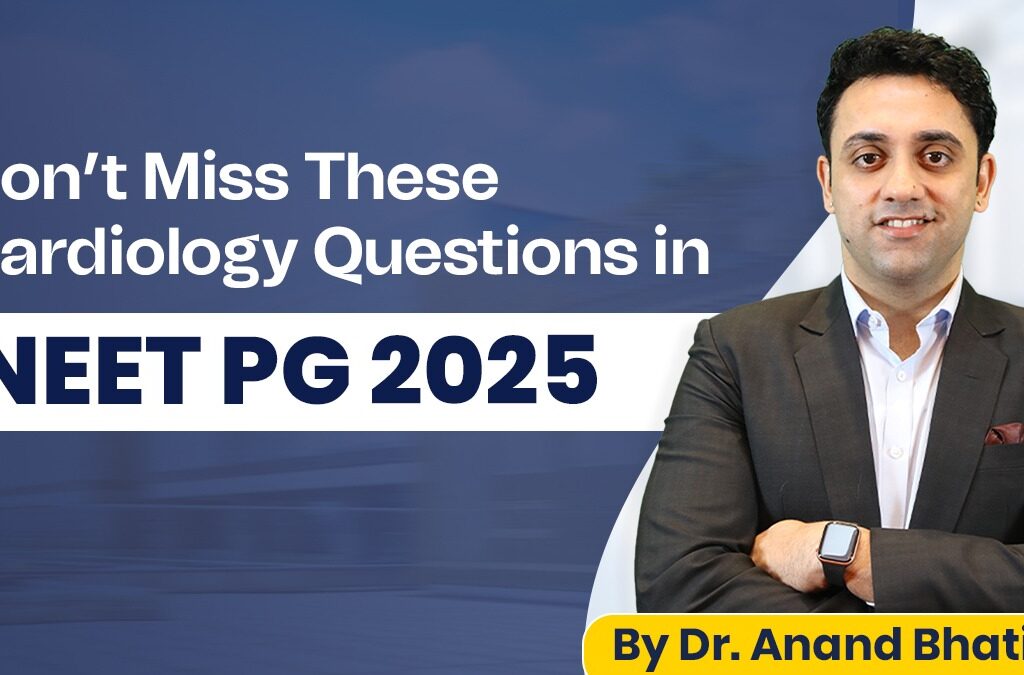When it comes to NEET PG preparation, Cardiology is one of the most scoring topics. A lot of questions are directly repeated from previous years, and a few simple concepts can easily fetch you extra marks. In this quick guide, Dr. Anand Bhatia, Pediatrics Faculty, brings you a rapid-fire revision of “High-Yield Cardiology Questions” with clear-cut explanations and common MCQ traps to avoid.
In this blog, we have compiled the most important clinical questions, X-ray signs, and high-probability MCQ areas which are frequently asked in NEET PG, based on trend analysis and previous year question papers.
If you want to maximise your NEET PG 2025 score, these are the absolute must-know topics from Cardiology!
Click here to watch this session: Don’t Miss These Cardiology Questions in Your NEET PG 2025 Exam
Most Common Congenital Heart Diseases
- The most common congenital heart disease is Ventricular Septal Defect (VSD).
- Is VSD a right-to-left or left-to-right shunt?
It is a left-to-right shunt because the left side of the heart has higher pressure than the right side.
Important examples of left-to-right shunts include:
- ASD (Atrial Septal Defect)
- VSD (Ventricular Septal Defect)
- PDA (Patent Ductus Arteriosus)
Most Common Cyanotic Congenital Heart Disease
- The most common cyanotic congenital heart disease on Day 1 of life is TGA (Transposition of the Great Arteries).
- What is the X-ray finding in TGA?
The classical “Egg on Side Appearance” is seen in TGA.
Must-Know X-ray Signs in Cardiology
- Boot-shaped heart → Tetralogy of Fallot (TOF)
- Box-shaped heart → Ebstein Anomaly
- Figure 3 appearance → Coarctation of Aorta
- Figure of 8 appearance → Supracardiac TAPVC (Total Anomalous Pulmonary Venous Connection)
- Important Tip: Figure of 8 is seen specifically in Supracardiac TAPVC and not just any TAPVC.
Trilogy, Tetralogy, and Pentalogy of Fallot
- Trilogy of Fallot (Mnemonic RAP):
- R → Right Ventricular Hypertrophy
- A → Atrial Septal Defect
- P → Pulmonary Stenosis
- Tetralogy of Fallot (Four Components):
- Right Ventricular Hypertrophy
- Pulmonary Stenosis
- Ventricular Septal Defect (VSD)
- Overriding of the Aorta
C. Pentalogy of Fallot (Five Components):
All the components of Tetralogy + Atrial Septal Defect (ASD)
Final Summary Before Exam
- Most common acyanotic congenital heart disease → VSD
- Most common cyanotic congenital heart disease on Day 1 of life → TGA
- The most common cyanotic congenital heart disease after the neonatal period → TOF
- High-Yield X-ray Appearances → Boot, Box, 3, and 8 figures
- Trilogy = RAP, Tetralogy = 4 defects, Pentalogy = TOF + ASD
Conclusion
Mastering Cardiology can be the easiest way to secure extra marks in NEET PG 2025 if you revise these must-know concepts regularly. Don’t just read—revise actively, practice PYQs, and learn to identify X-ray images correctly because they are high-scoring questions in your exam.
Always remember this golden line by Dr. Anand Bhatia –
“Successful is the one who enjoys his daily routine. Study well, but don’t forget to enjoy the journey.”
If you found this revision useful, don’t forget to check out our detailed FREE video sessions on the Cerebellum Academy YouTube Channel, where India’s top faculties guide you for NEET PG, INI-CET, and FMGE preparation with conceptual clarity and rapid revisions.
🛎️ Subscribe to the channel now, stay updated, and make your preparation easier and smarter.
Download Cerebellum NEET PG Preparation Android app
Download Cerebellum NEET PG Preparation iOS app
Download Cerebellum NEET PG Preparation iphone app

